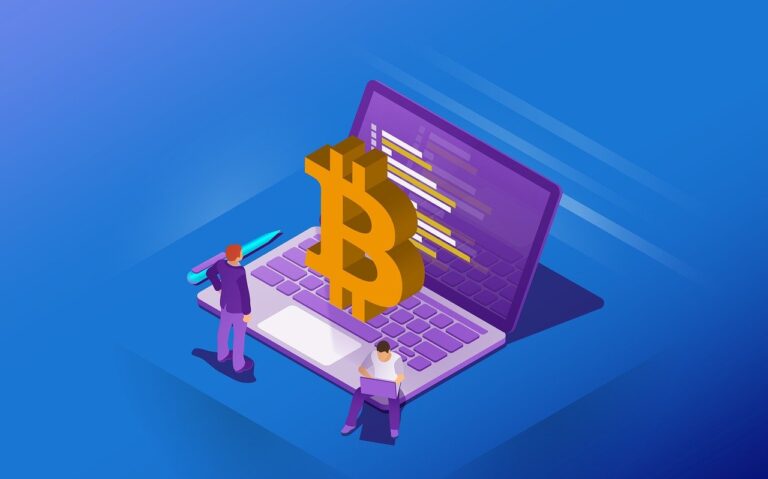Cryptocurrency trading has evolved far beyond simple buying and selling of digital assets. With the advent of more sophisticated financial instruments, traders now have access to multiple ways to speculate, hedge, and profit from market movements. Two of the most popular methods are spot trading and futures trading.
Both offer unique opportunities and carry their own risks. For new and experienced traders alike, understanding the distinctions between spot and futures trading is crucial for building an effective trading strategy. In this article, we’ll break down what each type of trading involves, explore their advantages and disadvantages, and help you decide which approach may be right for your crypto journey.
What Is Spot Trading?
Spot trading refers to the immediate buying or selling of a cryptocurrency at its current market price—known as the spot price. When you buy Bitcoin on a crypto exchange and receive it in your wallet, that’s spot trading.
Spot trading takes place on spot markets, where transactions are settled “on the spot.” There’s no leverage, no expiration date, and no speculative agreement—it’s simply the direct exchange of assets.
How Spot Trading Works:
-
You buy 1 BTC at $30,000.
-
You own the asset outright and can store it in your wallet.
-
If BTC rises to $35,000, you make a profit by selling at the new price.
What Is Futures Trading?
Futures trading involves a contractual agreement to buy or sell an asset at a predetermined price at a future date. In crypto, futures contracts allow traders to speculate on the price movement of an asset without owning it.
Crypto futures are offered on centralized exchanges like Binance, Bybit, and CME, and they often include perpetual contracts (perps), which do not have an expiration date.
How Futures Trading Works:
-
You open a futures position on BTC at $30,000.
-
You can go long (expecting price to rise) or short (expecting price to fall).
-
Futures allow the use of leverage—borrowing capital to control a larger position.
-
Your profit/loss is based on price differences between opening and closing the contract.
Key Differences at a Glance
| Feature | Spot Trading | Futures Trading |
|---|---|---|
| Ownership | You own the actual crypto | No ownership, only contract |
| Leverage | None | Often 1x to 100x |
| Risk Level | Lower | Higher due to leverage |
| Shorting | Not directly possible | Easy to short assets |
| Settlement | Immediate | At contract close or perpetual |
| Use Case | Investment, holding | Speculation, hedging |
Pros and Cons of Spot Trading
Pros of Spot Trading
1. Simplicity
Spot trading is straightforward and beginner-friendly. You buy, hold, or sell assets without needing to understand complex contracts or margin requirements.
2. Asset Ownership
When you spot trade, you actually own the cryptocurrency. This enables participation in other blockchain activities like staking, governance, or DeFi.
3. No Liquidation Risk
Since there’s no leverage, you can’t be liquidated. Your asset’s value may drop, but you won’t lose your entire position due to a margin call.
4. Long-Term Investment Friendly
Spot markets are ideal for investors with a long-term mindset who believe in the growth of the asset over time.
5. Lower Fees
Compared to futures, spot trading generally has fewer fees. There’s no funding rate or borrowing cost.
Cons of Spot Trading
1. No Leverage
Without leverage, capital gains are directly tied to your investment amount. This limits potential profits (but also limits risk).
2. No Shorting
You can’t profit from price declines unless you borrow the asset or use derivatives.
3. Less Capital Efficiency
Spot traders must have full capital upfront. A $10,000 trade requires $10,000 in your account.
4. Slower Gains in Volatile Markets
In bull markets, leveraged futures traders can significantly outperform spot traders in percentage terms (albeit with greater risk).
Pros and Cons of Futures Trading
Pros of Futures Trading
1. Leverage Amplifies Gains
You can control a large position with a relatively small amount of capital. For example, with 10x leverage, a $1,000 investment controls $10,000 worth of crypto.
2. Ability to Short
Futures allow traders to profit from falling prices by opening a short position. This is valuable in bearish markets.
3. Hedging Opportunities
Institutional investors and miners often use futures to hedge against price fluctuations and lock in profits.
4. High Liquidity
Major futures markets (especially BTC and ETH) offer high liquidity and tight spreads, enabling fast execution.
5. Flexible Strategies
Futures support a variety of trading strategies including scalping, arbitrage, spread trading, and hedging.
Cons of Futures Trading
1. High Risk of Liquidation
Leveraged positions can be liquidated if the market moves against you, resulting in total loss of the position.
2. Complexity
Futures contracts, funding rates, margin requirements, and liquidation thresholds add layers of complexity that may overwhelm new traders.
3. Funding Fees
Perpetual contracts charge periodic funding fees between long and short holders to keep contract prices aligned with spot markets. These fees can eat into profits.
4. Volatility Amplifies Losses
While leverage can amplify gains, it also increases the speed and magnitude of losses.
5. Emotional Stress
Managing leveraged positions requires emotional discipline. Many traders lose money due to panic, greed, or poor risk management.
Examples of Spot vs. Futures Trades
Example 1: Spot Trade
-
Buy 1 BTC at $30,000
-
Price rises to $33,000
-
You sell and earn $3,000 profit (10%)
Example 2: Futures Trade with 10x Leverage
-
Open long BTC position at $30,000
-
Use $3,000 capital to control $30,000 position
-
BTC rises to $33,000 (10% gain)
-
Your return is 10% x 10 = 100%
-
Profit = $3,000
However: If BTC dropped 10%, your position would be liquidated, and you’d lose the entire $3,000.
When to Choose Spot Trading
Choose spot trading if:
-
You are a beginner in crypto investing.
-
You want to own actual crypto and participate in the ecosystem (e.g., staking, DeFi).
-
You have a long-term investment horizon.
-
You prefer lower-risk exposure.
-
You want to avoid the stress of monitoring positions daily.
When to Choose Futures Trading
Futures trading is suitable if:
-
You are an experienced trader who understands leverage and risk management.
-
You want to profit in both bull and bear markets.
-
You are looking for high capital efficiency.
-
You engage in short-term trading or scalping.
-
You need to hedge a portfolio against price volatility.
How to Manage Risk in Futures Trading
Because of the elevated risk in futures, strict risk management is essential:
Tips for Safer Futures Trading:
-
Use low leverage (2x–5x) to reduce liquidation risk.
-
Set stop-loss orders to exit losing trades early.
-
Limit position sizes relative to your portfolio.
-
Understand funding rates—they can impact your profitability.
-
Track margin levels to avoid forced liquidation.
-
Never trade with money you can’t afford to lose.
Platforms That Support Spot and Futures Trading
| Platform | Spot | Futures | Notes |
|---|---|---|---|
| Binance | ✅ | ✅ | Most popular for both |
| Coinbase | ✅ | ❌ (futures on Coinbase Advanced in limited markets) | Best for U.S. spot trading |
| Bybit | ✅ | ✅ | Known for perpetual contracts |
| Kraken | ✅ | ✅ | Strong regulatory reputation |
| OKX | ✅ | ✅ | Advanced tools for futures |
Always verify platform security, fees, and regulatory compliance before trading.
Conclusion: Spot vs. Futures — Which Is Right for You?
Both spot and futures trading have their place in a trader’s toolkit. The right choice depends on your goals, experience level, and risk appetite.
| Investor Type | Best Choice |
|---|---|
| Beginner | Spot Trading |
| Long-Term Holder | Spot Trading |
| Risk-Averse | Spot Trading |
| Short-Term Trader | Futures Trading |
| Hedger | Futures Trading |
| High-Risk Tolerant | Futures Trading |
Spot trading offers simplicity and ownership, while futures trading offers flexibility and leverage. For most retail investors, starting with spot and gradually exploring futures is a smart progression.
Understanding both markets allows traders to adapt strategies to different market conditions—whether you’re riding a bull run, surviving a bear market, or executing complex hedging tactics.



